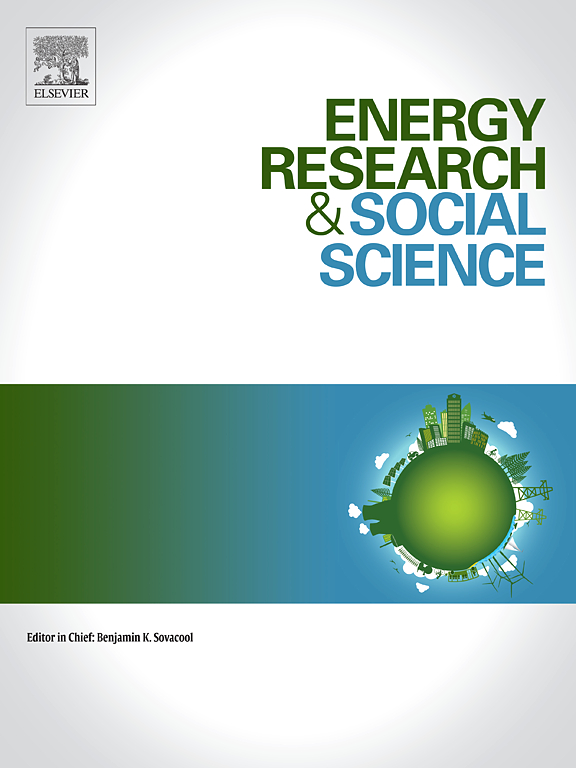Spatial dynamics of low-carbon transitions: Peer effects and disadvantaged communities in solar energy, electric vehicle, and heat pump adoption in the United States
IF 6.9
2区 经济学
Q1 ENVIRONMENTAL STUDIES
引用次数: 0
Abstract
The transition to clean energy technologies in residential homes is accelerating. Previous research highlights peer influence, driven by social interactions and visibility, as a key factor in adoption, primarily focusing on rooftop solar installations. However, much of this research has not considered the impact of built environment characteristics or other clean energy technologies. This study explores peer effects in the adoption of rooftop solar, electric vehicles (EVs), and heat pumps across urban, rural, and disadvantaged U.S. communities, hypothesizing that increased visibility, due to neighbor installations, enhances these effects. All technologies exhibit peak peer effects at distances of 150 to 250 m. Rooftop solar has the strongest peer effects, extending up to 700 m in urban areas and 2 km in rural areas. EVs and heat pumps exhibit weaker effects within 400 and 250 m in urban settings, respectively. Peer effects are more pronounced in less densely populated areas and during early stages of adoption. Disadvantaged communities, however, require additional support to overcome their weaker peer effects, especially for EV adoption in urban areas and rooftop solar in rural regions. These findings highlight the need for targeted strategies that leverage visibility and peer influence while addressing socioeconomic disparities.
求助全文
约1分钟内获得全文
求助全文
来源期刊

Energy Research & Social Science
ENVIRONMENTAL STUDIES-
CiteScore
14.00
自引率
16.40%
发文量
441
审稿时长
55 days
期刊介绍:
Energy Research & Social Science (ERSS) is a peer-reviewed international journal that publishes original research and review articles examining the relationship between energy systems and society. ERSS covers a range of topics revolving around the intersection of energy technologies, fuels, and resources on one side and social processes and influences - including communities of energy users, people affected by energy production, social institutions, customs, traditions, behaviors, and policies - on the other. Put another way, ERSS investigates the social system surrounding energy technology and hardware. ERSS is relevant for energy practitioners, researchers interested in the social aspects of energy production or use, and policymakers.
Energy Research & Social Science (ERSS) provides an interdisciplinary forum to discuss how social and technical issues related to energy production and consumption interact. Energy production, distribution, and consumption all have both technical and human components, and the latter involves the human causes and consequences of energy-related activities and processes as well as social structures that shape how people interact with energy systems. Energy analysis, therefore, needs to look beyond the dimensions of technology and economics to include these social and human elements.
 求助内容:
求助内容: 应助结果提醒方式:
应助结果提醒方式:


